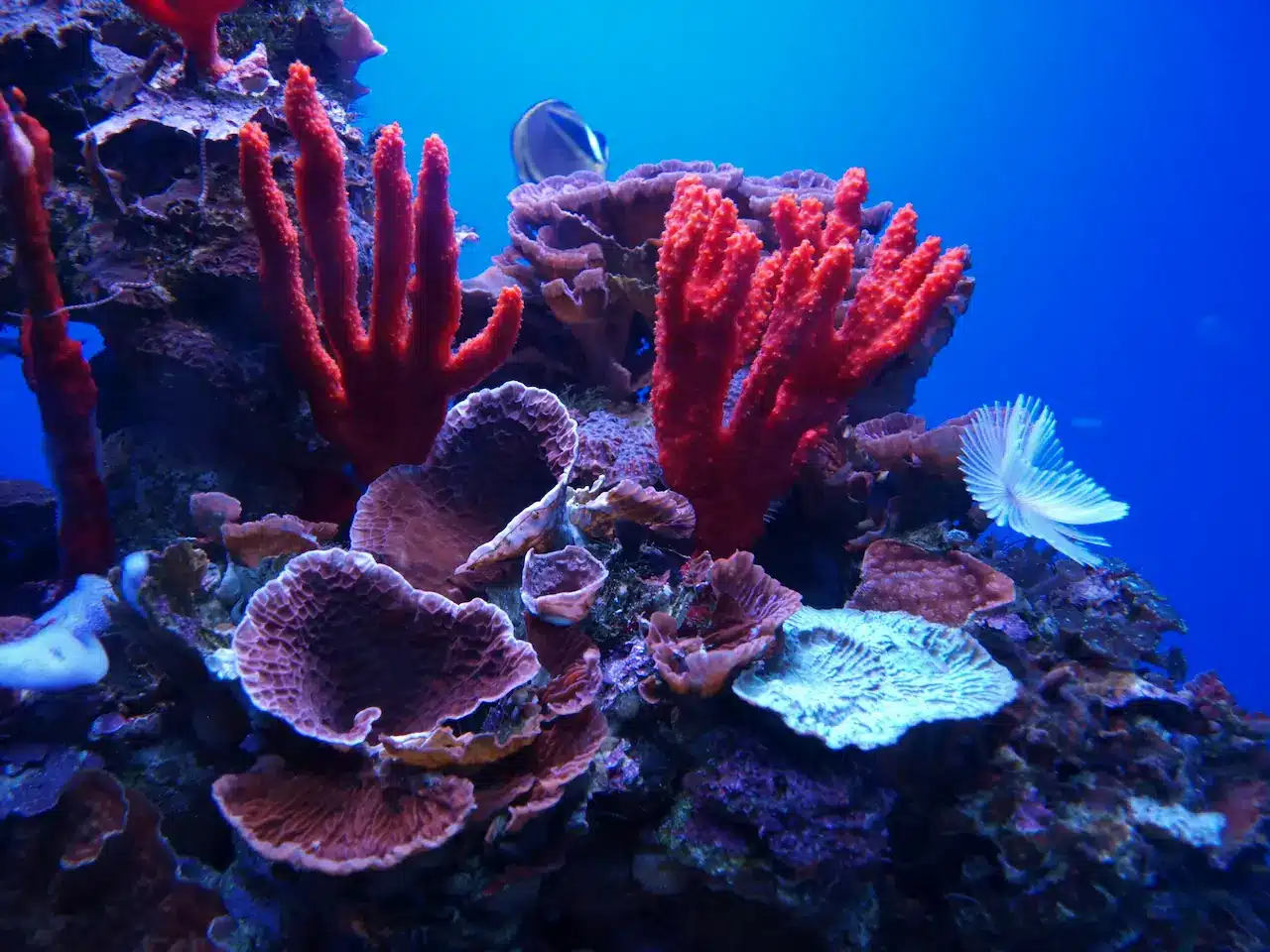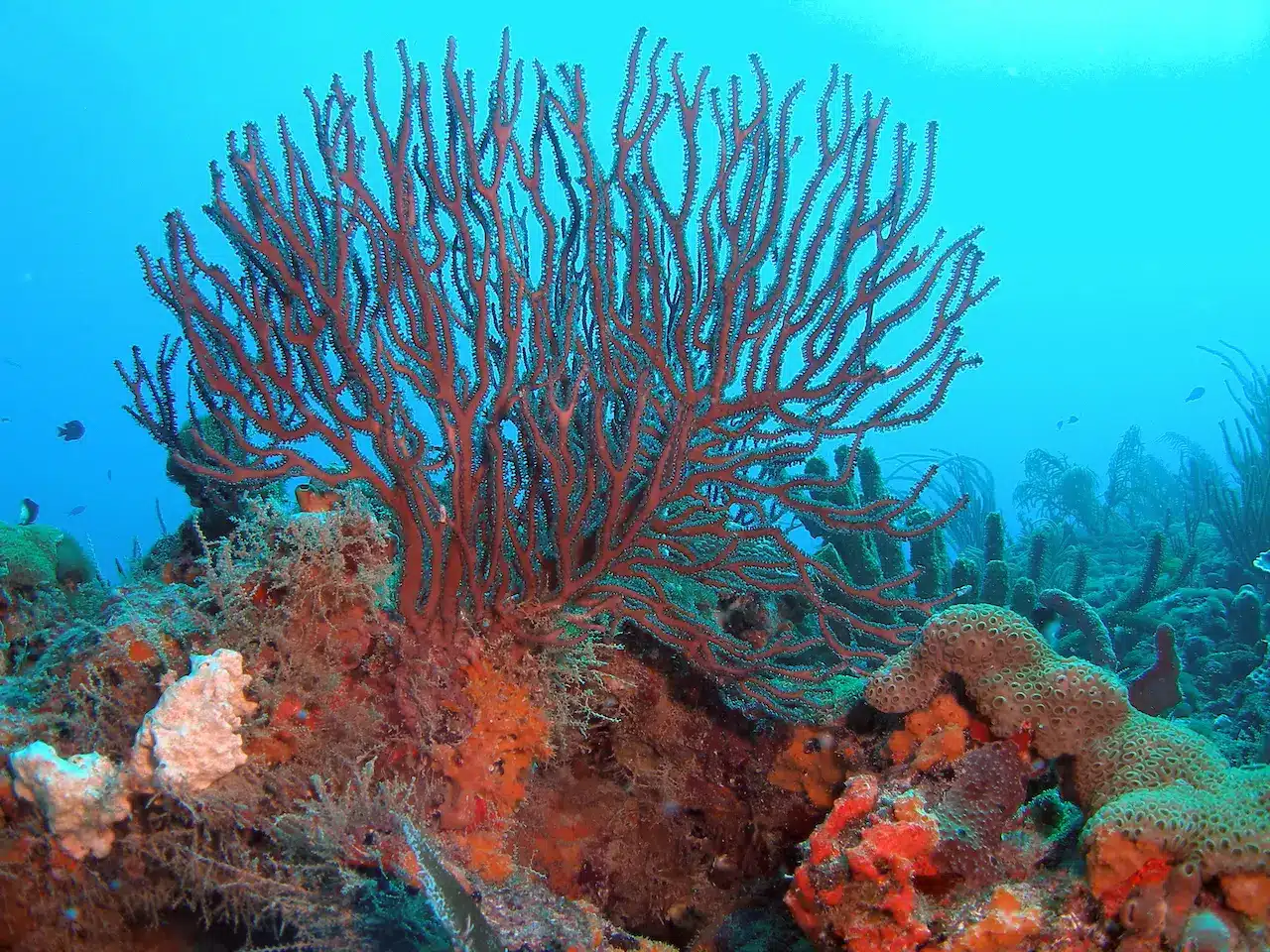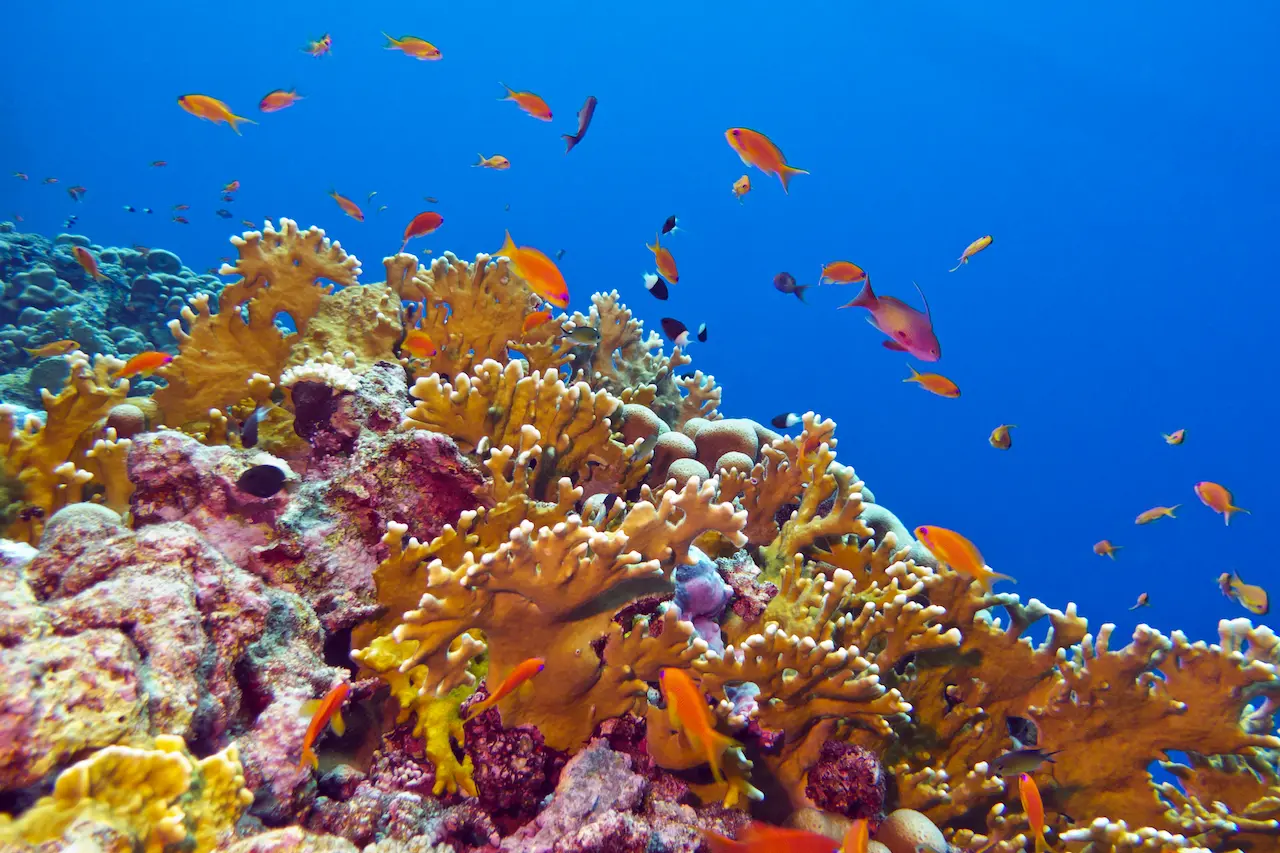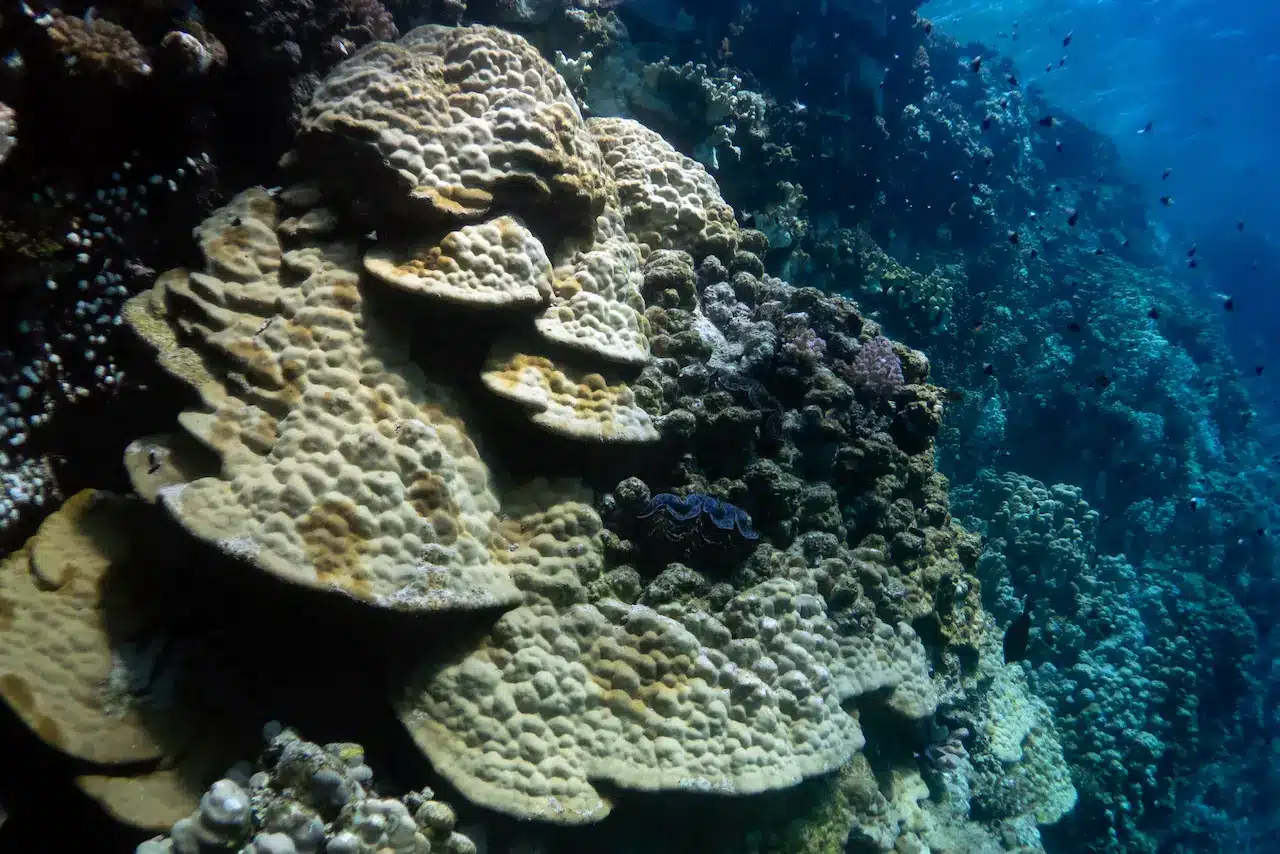How to Protect A Coral Reef: A Practical Guide
Coral reefs are biodiversity hotspots teeming with marine life. They protect coastlines, support fisheries, generate tourism income, and harbour species that may hold the keys to new medicines.
Yet escalating threats from climate change, pollution, overfishing, and more have caused extensive reef degradation worldwide. Up to 90% of reefs could disappear by mid-century if we don’t take action. Urgent steps are needed to protect these valuable ecosystems.
Table of Contents
ToggleIn this comprehensive guide, we will explore how to effectively conserve coral reefs.
7 Tips on How to Protect A Coral Reef
There are important actions we can take to help protect and conserve coral reefs. With deliberate effort across many levels of society, we can safeguard these critical marine environments for future generations.
We’ll provide 7 practical tips that anyone can follow to defend coral reefs against current hazards. From simple lifestyle changes to becoming an ocean advocate, you’ll discover impactful steps that make a tangible difference.
Get inspired to join the movement to protect our planet’s corals by reading on for 7 easy ways you can lend a hand in saving these invaluable rainforests of the sea.

1. Understand The Importance Of Coral Reefs
Coral reefs are one of the most diverse and valuable ecosystems on Earth. Often called “rainforests of the sea”, coral reefs are home to 25% of all marine species, despite occupying less than 1% of the ocean floor.
More than one million species live on or around reefs, including thousands of species of fish, molluscs, sea turtles, sharks, dolphins, and more. Beyond supporting tremendous biodiversity, coral reefs provide essential services to humans around the globe.
It’s estimated that 30 million people depend directly on reefs for food, coastal protection, tourism income, and cultural value.
Additionally, coral reefs are a critical source of new medicines – ingredients derived from reef animals and plants are used to treat cancer, arthritis, viruses, and other illnesses. Clearly, coral reefs are a vital ecosystem we cannot afford to lose.
2. Identify Threats Facing Reefs
To protect coral reefs, we first need to understand the threats confronting them. The primary dangers to coral reefs are climate change, ocean acidification, overfishing, destructive fishing practices, pollution, invasive species, and coastal development.
Rising ocean temperatures due to climate change lead to coral bleaching, in which corals expel the symbiotic algae that provide them with nutrients and colour. Prolonged bleaching kills corals.
Ocean acidification – the decreasing ph of seawater as oceans absorb carbon dioxide from the atmosphere – impedes corals’ ability to build their calcium carbonate skeletons. Many fish species that keep algae and seaweed from overwhelming reefs are overharvested, while dynamite and cyanide fishing demolish reef structures.
Nutrient runoff from agriculture and sewage promotes algal blooms, which suffocate corals. Invasive species like lionfish outcompete native reef species for food and habitat. Expanding coastal development cuts down mangroves that protect reefs from erosion and storm damage.
3. Establish Marine Protected Areas
A proven way to safeguard coral reefs is to establish marine protected areas (MPAS) like reserves, sanctuaries, parks, and refuges, where human activities like fishing are prohibited or restricted.
MPAS allow coral ecosystems to recover by reducing pressures like overfishing, dynamite fishing, anchor damage from boats, pollution, and coastal development.
Larger, better-enforced MPAS are most effective at preserving biodiversity and increasing fish biomass. Networks of MPAS better protect species with large home ranges. MPAS can also buffer coral reefs against warming ocean temperatures and ocean acidification.
Specific steps in establishing an effective MPA include gaining support from local communities, selecting appropriate locations, developing management plans, banning destructive practices, monitoring ecosystems, and enforcing rules and regulations.
Community engagement is key so residents understand the long-term benefits of protection and help develop sustainable alternative livelihoods like ecotourism. MPAS should encompass critical habitat and diverse ecosystem types.
Rules need to be tailored to conservation aims – for example, no-take zones for full protection or seasonal closures during spawning periods. Regular monitoring provides data to evaluate MPAS and improve management strategies. Well-funded enforcement of rules is vital to deter violations.
Also Read: How To Regrow A Coral Reef
4. Reduce Pollution And Runoff
Reducing pollution and runoff from the land is critical for keeping reef waters clean. Sewage treatment systems must be installed to prevent human waste from flowing into the ocean. Strict regulations are needed to prevent industrial and agricultural runoff containing pesticides, herbicides, fertilisers, oil, and other toxins.
Safeguards are required to keep sediment from construction, logging, and farming from smothering reefs. Public education can encourage people to limit the use of plastics and properly dispose of trash to prevent marine debris.
Specific steps to control pollution and runoff include upgrading sewage systems, imposing pollution regulations on industry, implementing agricultural best management practices like swales and cover crops, outlawing dumping waste into waterways, retaining vegetation along coasts to filter runoff, and conducting environmental assessments for coastal development projects.
Governments also need to monitor and enforce water quality standards. At the individual level, people can reduce the use of fertilisers and pesticides, properly maintain septic tanks, limit paved surfaces, and pick up pet waste.

5. Restore Damaged Reefs
Where coral reefs have already been degraded, active restoration efforts can help rehabilitate ecosystems. Coral farming involves collecting coral fragments from healthy sections of a reef, growing them in nurseries, and transplanting them to damaged areas. This can jumpstart ecosystem recovery.
Artificial reefs, made from materials like concrete, sunken ships, or PVC piping, provide hard surfaces for corals to attach and grow on. Removing invasive algae helps native corals reestablish themselves. Closed areas allow fish populations to rebound so they can maintain balance on the reef.
Restoration has challenges – it’s expensive, reefs take a long time to recover, and restored corals are still vulnerable to rising temperatures.
But in select locations, hands-on rehabilitation combined with reducing threats can resuscitate and regrow degraded reefs. For instance, coral cover on some reefs in the Florida Keys has increased after transplanting staghorn and elkhorn corals raised in offshore nurseries.
6. Monitor The Health Of Reefs
To gauge the effectiveness of protection efforts and target management strategies, consistent monitoring is essential. Key parameters to track long-term include water temperature, salinity, turbidity, and ph to detect climate change impacts. Benthic cover surveys reveal coral cover and growth as well as macroalgae abundance.
Reef structural complexity indicates erosion or collapse. Fish population surveys help manage fisheries and track trophic cascades. Coral bleaching and disease outbreaks need rapid response protocols.
Standardised monitoring methods allow comparisons across sites and years. Involving local stakeholders, citizen scientists, dive shops, schools, and tourists in monitoring fosters learning and community participation.
Remote sensing through satellites provides synoptic views of entire reef systems. Advanced sensors can measure parameters like currents and bathymetry.
Central databases make reef health data widely accessible. Integrating diverse monitoring data helps model and forecast future ecosystem changes.
7. Cut Carbon Emissions
Since climate change and ocean acidification pose existential threats to coral reefs worldwide, reducing carbon dioxide emissions is imperative. Steps must be taken at the societal and governmental levels to transition from fossil fuels to renewable energy sources like solar and wind power.
Improving energy efficiency in buildings, transportation, and industry will curb emissions. Putting an appropriate price on carbon through taxes or cap-and-trade programs makes polluters accountable.
Incentivising the switch to electric vehicles and renewable energy will accelerate reductions. Funding research on clean energy technologies and large-scale CO2 removal can enable deeper decarbonization.
Individual actions like driving less, flying less, wasting less energy, and eating lower-carbon foods help move society in a sustainable direction. Supporting climate-friendly policies and politicians gives momentum to emission reduction efforts.
People can also volunteer with groups lobbying for clean energy policies. With concerted commitment across all levels of society, it’s possible to reach carbon neutrality and protect our invaluable coral reefs.
Why Should We Protect Coral Reefs?
There are several compelling reasons we should protect and conserve coral reefs.
Biodiversity Hotspots
Coral reefs are one of the most biodiverse ecosystems on the planet. They occupy less than 0.1% of the ocean floor, yet are home to about 25% of all marine species. This includes thousands of species of fish, invertebrates, sea turtles, sharks, marine mammals, and more.
Protecting coral reefs means protecting this incredible diversity of life, much of which has yet to be discovered. Losing reefs would mean losing access to organisms that could provide new medicines, foods, and other benefits to humanity.
Coastal Protection
Coral reefs act as natural breakwaters, absorbing up to 90% of wave energy before it impacts shorelines. This protects coastal communities, beaches, infrastructure, and real estate from storm surges, flooding, and erosion.
Artificial structures would be far more costly to build. Reefs reduce these risks from tropical storms and sea level rise associated with climate change.
Fisheries
Reefs support over a quarter of all marine fish species. This includes major commercial food fish like tunas, snappers, and groupers.
Many small island nations are economically dependent on reef fisheries. Damaged reefs cannot sustain healthy fish populations, threatening food security and livelihoods for millions who rely directly on fishing.
Tourism Appeal
Coral reefs are a huge draw for recreational divers, snorkelers, and beachgoers around the world. Tourism centred on the Great Barrier Reef alone generates over $5 billion annually for Australia.
Degraded reefs lose their aesthetic value and ability to attract tourists, eliminating an important source of revenue for many coastal regions.
Protecting coral reefs means securing crucial ecosystem services that benefit people locally and globally. We cannot afford to lose these unique and valuable ecosystems.
How Do You Keep Coral Alive?
There are several techniques for keeping captive corals alive and healthy in aquarium environments.
Water Quality
Good water quality is essential. Key parameters like temperature, ph, salinity, nutrients, and calcium levels must be carefully controlled and monitored.
Filtration systems remove waste while protein skimmers pull out dissolved organic compounds. Partial water changes help replenish minerals. Proper water flow provides oxygen and prevents detritus buildup.
Lighting
Reef aquariums need high-output lighting that mimics tropical sunlight. LED lighting tuned to specific coral wavelengths promotes growth. A timer can regulate a 10-14 hour daylight period. Light intensity should be gradually ramped up and down.
Stable Conditions
Sudden changes in water parameters stress corals, so maintaining stable, optimal conditions is key. Using a quarantine tank for new corals prevents the introduction of parasites and diseases. Monitoring alkalinity helps keep ph and calcium levels steady for calcification. Automated sensors turn equipment on/off if values fluctuate outside ideal ranges.
Nutrition
Live phytoplankton, microzooplankton, or prepared foods provide nutrition for captive corals and their symbiotic algae. Target feeding times when corals extend their polyps. Calcium and other supplements support rapid coral growth. Filter feeders also benefit from regular additions of plankton.
Pests
Algae and cyanobacteria blooms must be promptly removed to prevent coral smothering. Pests like flatworms, nudibranchs, and pyramidellid snails should be eliminated to avoid predation on coral polyps.
Natural predators like peppermint shrimp can control nuisance pests. Quarantining new corals limits the introduction of hitchhikers.
With close attention to these factors, aquarists can maintain a thriving captive coral reef ecosystem.

Is There A Solution To Coral Bleaching?
Coral bleaching is a major threat facing reefs worldwide, but there are some emerging solutions to address this problem:
Reduce Local Stressors
Minimising local stressors like pollution and overfishing can help make corals more resilient to warming waters. Establishing marine protected areas reduces these impacts and promotes recovery. Managing water quality dampens bleaching severity.
Assisted Evolution
Selectively breeding more temperature-tolerant corals in nurseries may produce strains with bleaching resistance. Identifying heat-adapted symbiont algae types that can withstand higher temperatures helps corals survive warming.
Cooling Devices
Devices like turbine-driven upwelling bring cooler deep water onto reefs to temporarily lower temperatures during bleaching events. This buys the corals time until the waters cool again. Shade balls and structures provide localised cooling by blocking incoming solar radiation.
Active Restoration
Transplanting fast-growing coral species and fragments grown in nurseries helps regenerate bleached reefs faster. Restoration provides new healthy corals that seed recovery.
Alternative Reefs
Artificial reef structures give new hard surfaces for bleaching refugees and coral larvae to settle on if native reefs die. Hybrid reefs incorporate organisms like oysters that tolerate wider temperature swings.
Climate Action
Most critically, rapidly reducing greenhouse gas emissions to limit global warming to 1.5°C gives coral reefs the best chance of surviving in the future. This requires society-wide efforts.
While a comprehensive solution remains elusive, combining these management efforts and new technologies gives coral reefs their best shot at withstanding bleaching events.
What Kills Coral Reefs The Most?
The greatest threats causing mass mortality of corals worldwide are climate change and ocean acidification associated with increased atmospheric CO2.
Warming Seas
Rising ocean temperatures trigger widespread coral bleaching events. Prolonged high temperatures cause the corals to die off in mass mortality events if the bleaching is too severe. More frequent and intense marine heatwaves are projected with continued climate change.
Ocean Acidification
Increasing CO2 absorption into the oceans decreases seawater pH and carbonate ion levels. This makes it harder for corals to build their calcium carbonate skeletons, causing weakened growth and structures. Acidification can be lethal in conjunction with bleaching.
Slow Recovery
With accelerating bleaching-related mass mortality, corals do not have enough time to recover before the next event hits. Slow-growing species can take decades to regrow, while fast-spreaders are more vulnerable to storms and predators. This hinders ecosystem recovery between rapidly recurring bleaching events.
Exacerbating Factors
Local stressors like pollution, sedimentation, destructive fishing, and coastal development magnify bleaching impacts and impede recovery. With reduced resilience, corals are less likely to bounce back after mortality events.
Climate change is the ultimate death knell for coral reefs globally if warming continues unabated. Solving the root causes by reducing carbon emissions is key to saving these iconic ecosystems.
Conservation efforts can help buy some time locally, but only addressing global climate change can prevent the worst impacts on coral reefs worldwide.
Conclusion
Coral reef conservation ultimately requires a multi-pronged strategy at both local and global scales. Marine protected areas can enable reef recovery in the near term.
Reducing pollution, overfishing, and physical damage gives coral ecosystems breathing room to rebound. Where reefs are actively deteriorating, restoration programs like coral gardening can kickstart the process of rehabilitation.
Ongoing monitoring ensures management stays on track while cutting CO2 emissions attacks the root causes of coral decline. With science-based policies, stakeholder collaboration, public engagement, and personal initiative, we can come together to protect these vibrant bastions of marine biodiversity.


